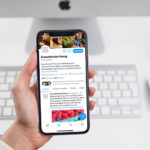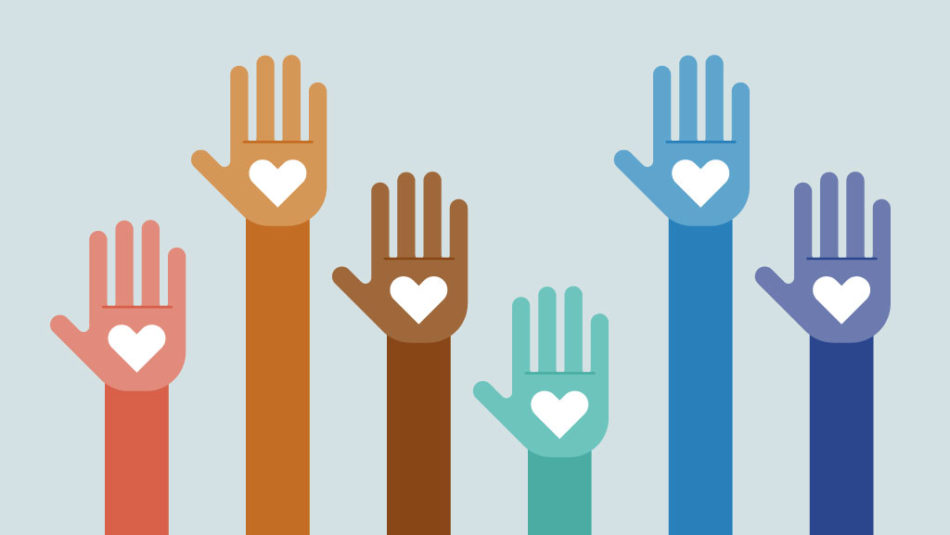
Community Care is the New Self-care: How Food Brands Can Build a Community Strategy in These Times
Ahhhh, self-care. There’s nothing like relaxing with a good book, a cup of detox tea, a bath, and about $250 worth of skincare products, am I right?
Despite its name, the premise of “self-care” doesn’t historically come from a place of serving one’s self, as the term actually surfaced within the women’s and civil rights movements in the 60’s, then intersected with the wellness industry in the 80’s to eventually become the sheet-masking routine that it is today.
Not to discount the idea of self-care, because at its best, it lays the necessary foundation for what we’re here to talk about: community care.
What 2020 brought to light and what has continued into 2021 is a new sustained level of care and compassion for the collective “we.” This goes beyond helping your neighbor shovel their driveway – although as the Midwesterner I encourage you to do so. It’s about committing to what your community system needs, and what you as a brand have to offer it.
How to Engage in Community Care Today
Consumers have gone into the final months of 2021 with heightened expectations of themselves, and are in-turn asking their household brands “Who is your community? How are you showing up for them in a real way, and is this enough to keep my loyalty?” They will reward companies that take action to improve important societal issues and who fuel the new era of conscious consumption and community building.
Help Your Customers Find Their “We”
After a year and a half in isolation, consumers will be reemerging and asking themselves, who are my people? Where is my place? Brands who create a sense of belonging for their customers centered on a clear purpose will experience stronger emotional loyalty.
The most obvious industry to point to is the fitness industry, which is littered with brands who have managed to build major tribal followings among their customers (i.e. Peloton).
Although tribal suggests the opposite, Peloton ensures their “we” is an inclusive one. They’ve built a partnership strategy intended to open their product to communities who have historically felt like fitness isn’t a place for them (enter their recent collaboration with Beyonce and HBCU’s). This strategy creates more cultural access to their brand, which is an important move for all consumer industries.
For food brands, what better occasion to help their customers find their “we” than the act of gathering around the dinner table when people need it?
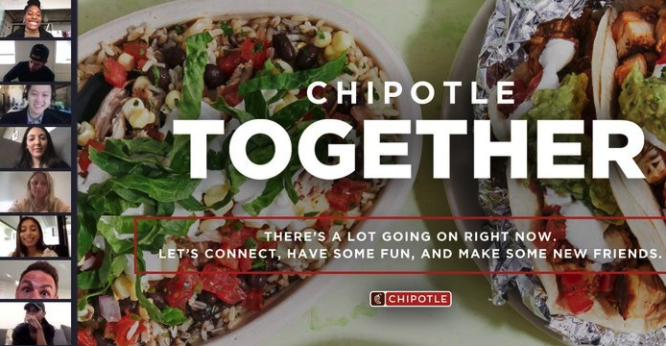
Chipotle was one of the first brands to respond to the stay-at-home orders with their “Chipotle Together” virtual gatherings. The virtual lunches took place via Zoom and aimed to keep their customers connected during a stressful time, and delighted with free burrito giveaways and celebrity guests.
How’d they do? Chipotle’s revenue for 2020 was $6.0 billion, an increase of 7.1% from 2019.
Help Your Customers Help Their Planet
Consumers will be changing their diets, not only for their own health, but for the health of the planet. The food industry has great potential to rethink their entire supply chains, from regenerative farming, to sustainable packaging, to minimizing food waste. Consumers will consider the brands they purchase as part of their own actions towards climate change and environmental protection – so, help them help all.
Unilever’s “Sustainable Living Brands” are growing 69% faster than the rest of the business and delivering 75% of the company’s growth.
Kellogg’s teamed up with UK brewery Seven Bro7hers to convert its rejected Corn Flakes, Rice Krispies, and Coco Pops breakfast cereals into beer.
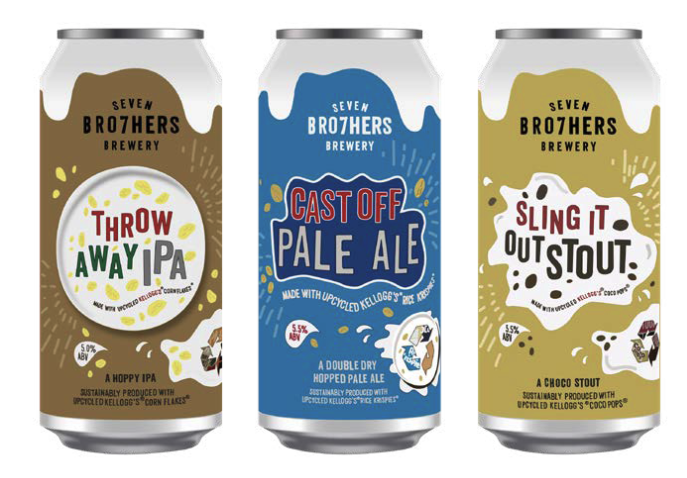
Air Co. is an innovative vodka brand that uses captured carbon to create it’s ultra-premium vodka. The company’s website claims its purpose was to create an award-winning vodka that, “balances indulgence with impact; a drink you can be proud to own and pleased to share.”
Collaborate Instead of Compete
Companies have more resources than single individuals, and your customers will make sure that’s being put to good use. Building a collaboration or ongoing partnership with another company for collective gain rather than solo profit is a great way to make an exponential impact, and also earn respect from your customers.
A beautiful example, although taken from the distant past of 2019, is from Burger King and McDonalds. The two competitors joined forces to launch the ‘Day Without Whopper’ campaign. Burger King halted sales of their top-selling product, The Whopper, for a single day in order to re-direct sales to the McDonald’s Big Mac, supporting their efforts to donate $2 to Children With Cancer for every Big Mac sold.

What values do you share with your competitors? How could those shared values benefit your community with a little teamwork?
Share Resources for the Greater Need
Similar to collaborations, we saw great examples of companies sharing resources in 2020. Lyft, who experienced a major decline in business in 2020, partnered with Amazon to provide new job opportunities to their driver pool, creating a shared labor model.
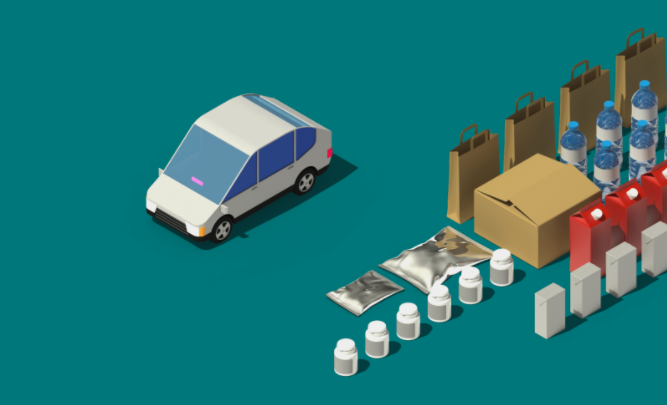
Lyft also encouraged their drivers to join the LyftUp Driver Community Task Force, which worked to deliver essential supplies to vulnerable communities.
The Essential Deliveries initiative allowed government agencies, local non-profits, businesses and healthcare organizations to request on-demand delivery of meals, groceries, medical supplies, hygiene products and home necessities. Partners such as Dole Packaged Foods, donated nutritious food to be delivered from their warehouses to senior facilities, and to low-income families to replace school lunches.
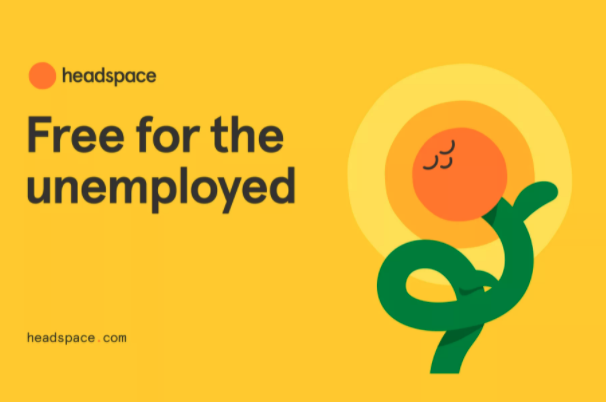
The mindfulness app, Headspace also recognized a great need for their offering since the pandemic began, and provided free premium memberships to anyone facing unemployment.
Have you thought about what resources within your company are in short supply, or conversely what resources you have in surplus that may be in high demand?
What Will Your Community Care Strategy Look Like Tomorrow?
As we move into the last few months of the year and enter into a new season of rebuilding, it will be imperative for us all to take an active role in contributing to our communities – as individuals, businesses, services and brands. As your customers start to look beyond the self-care culture of the past, and begin reserving their energy and efforts for greater community care, will you be joining them?

